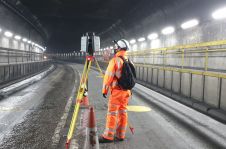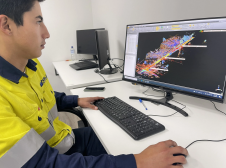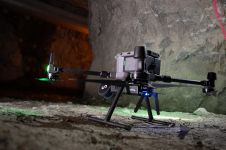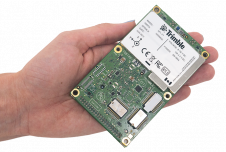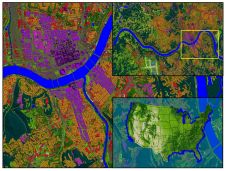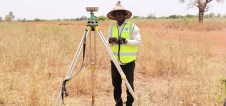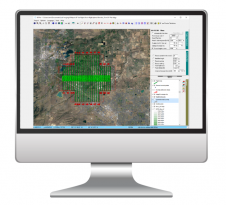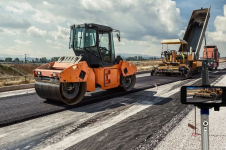3D Dynamic Emergency Routing
Directing Vehicles in Complex Urban Environments
Mega-cities suffer increasingly from manmade and natural disasters such as fire, collapse, poison-gas leak, bombing, and tsunami, leading to huge loss of life and assets on, above and below ground. To support quick and reliable vehicle routing to the site of calamity the authors developed a 3D emergency-vehicle routing system and implemented this in 3D GIS software.
城市应急响应和灾害管理需要快速可靠的车辆路线到灾难的现场。救援工作往往受到缺乏车辆路由工具的阻碍,以通过最佳的路线引导救援团队到目的地。适当的灾害风险管理和决策要求此类工具考虑到复杂城市环境中固有的多维动态因素。
Vital Features
紧急车辆路由系统(EVRS)应显示某些功能,必须:
- be decentralised, not stand-alone
- be connected to other systems, such as intelligent traffic system, intelligent building system and safety-management system
- be able to handle a variety of data stemming from different sources, in different formats and within different reference systems
- be able to handle, in addition to fixed data, real-time data on traffic and events
- be arranged according to a network model which supports describing and integrating 3D features of road structures, adaptive routing, 3D visualisation and navigation
- take account of dissimilarity of routes for vehicle dispatching
- be able to visualise routes
- be able to respond quickly, since time is a most critical factor
- be reliable and highly flexible.
3D GIS technology provides new possibilities for creating an EVRS based on the above features.
3D Dynamic Network
Because they are unable to represent ‘above-ground’ and ‘below-ground’ objects, conventional networks have a limited capacity to represent and analyse multidimensional data (spatial and non-spatial). Many integrated standards for network representation, such as NCHRP and GIS-T enterprise, do not fully employ inter-object relationships such as ‘above’ and ‘below’. These networks also fail to integrate with and support 3D visualisation and analysis. Their use in urban emergency applications is therefore limited. In contrast, 3D dynamic networks are able to measure the true distance across sloping or hilly terrain, and to represent 3D structures such as overpasses or underpasses better than do 2D networks. Dynamic means here that the network structure may change over time: road segments may be inserted or deleted, and even road-weight may vary. When constructing a 3D dynamic network the following should be considered.
- An emergency vehicle is, while on the road, tracked by on-board GPS in real time. If the network structure changes, the routes from the current vehicle point to the updated destination(s) need to be recalculated.
- Online incident should be referenced to the road network, i.e. any change in road connectivity depicted in real time.
- 交通流量和旅行速度依赖于一天中的时间和天气状况(晴朗,暴风雨等)。预测路线的即将到来的交通情况,需要历史,时间戳记录。
- For quick and flexible response the network can be optimised adaptively by eliminating the ‘dead end’ of the network.
Dijkstra’s Algorithm
描述动态方面,一些方法can be used. For example, automatically adding event layers, positioning by mouse cursor, or map matching by position. Thus the user is able interactively to select points (dynamic events) on the road or off, or connect transportation-related data automatically to the road network so as to effect the change or instruction and the algorithm will determine and display the optimal path. Location Referencing System (LRS) is extended to relate various types of road data (spatial-temporal) to the 3D dynamic network in 3D GIS. As a result, the linear road coordinates and spatial coordinates can be connected; all analyses in 3D GIS have thus the same reference basis, which minimises data management and maintenance. Dynamic routing consists of two main parts: building and optimisation of the 3D network, and using the algorithm to find the optimal path. Dijkstra’s Algorithm, which is able to calculate the optimal route from one starting point to several destinations, is often used in dynamic and stochastic vehicle routing because its computational complexity is low. The implementation of the Dijkstra Algorithm requires determination of dynamic weights for each road feature, including segment length, slope, travel-speed, density of traffic, vehicle type and level of service.
Results
We carried out a trial of the method in Wuhan, China using 3D GISTM. The system provides two kinds of view: global and navigation. In contrast to other routing algorithms, this approach is able to avoid risky road segments by interactively selecting and automatically loading using the LRS method, and by including multidimensional information using MCE, (slope, traffic-control and lane numbers). Performance largely depends on how well emergency-related features are arranged. The quality of routing visualisation can be improved by adding traffic signals, texture and so on.
Acknowledgement
谢谢是由于李娟夫人进行编程工作。
进一步的阅读
- Zhu, Q., & Lin, H. (2004). CyberCity GIS: 3D city models for virtual city environment, Wuhan University Press (in Chinese).
Make your inbox more interesting.Add some geo.
Keep abreast of news, developments and technological advancement in the geomatics industry.
Sign up for free


